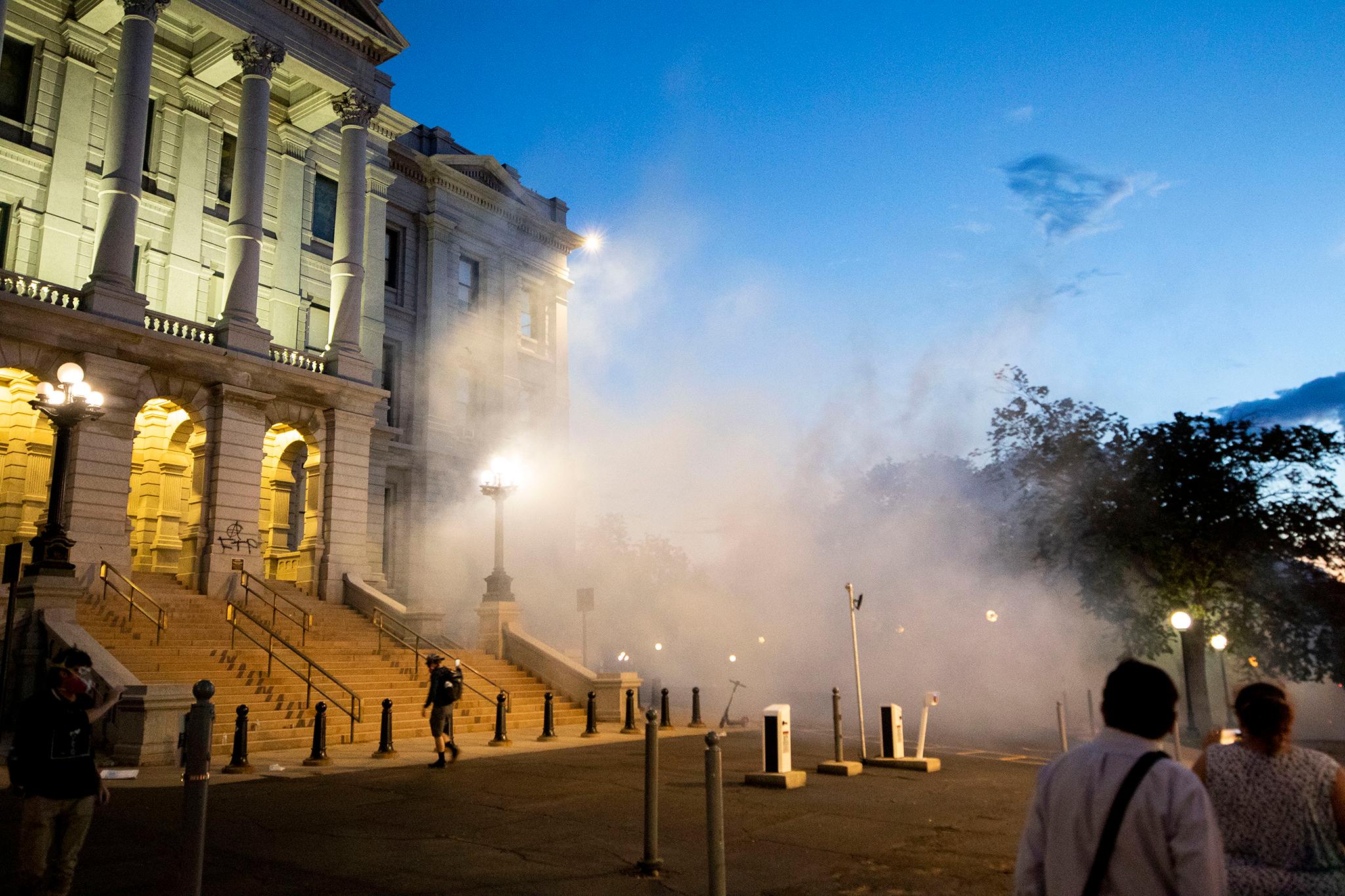On Wednesday, January 6, the world watched as mobs incited by President Trump breached the U.S. Capitol, intent on disrupting the certification of Joe Biden's election to the presidency. Since then, many Colorado activists and politicians have come forward to criticize the U.S. Capitol police's apparently lax response to the breach of Capitol security.
State Rep. Leslie Herod was amazed at how easily rioters broke through police barricades. She's protested at the U.S. Capitol and said security then seemed tight..
"I thought that the police must be in collusion with the protesters, honestly, because it just didn't make sense to me how someone can have such access," Herod said.
Vince Chandler is a Denver-based photographer and activist who's been involved in a number of demonstrations in D.C. Looking at images of the attempted coups, Chandler said it struck him that the Capitol police weren't acting as assertively as he'd seen them act at left-oriented protests and that they didn't seem to employ techniques like kettling, which he said they've historically used to control crowds.
"It felt like a retreat," he said," which doesn't feel like the American police force I've been coming into contact with since Ferguson."
As Tay Anderson, director of the Denver Public Schools Board of Education, followed the news on Wednesday, it amazed him that insurrectionists, most of whom were white, were able to so easily break into the U.S. Capitol building, one of the most secure buildings in the world, and that most of them did so without repercussion.
"They walked out of it like it was a ride at Disney World," Anderson said. "You have police officers taking selfies with people storming the Capitol like they were meeting celebrities."
He wasn't entirely surprised, though. Neither was Dr. Apryl Alexander, a community organizer with BLM 5280.
"It was pretty consistent with what we've seen with other demonstrations by majority white people, from individuals protesting at the Colorado State Capitol about their rights to not wear masks, to other demonstrations that have been held in the name of white supremacy," Alexander said. "It's what we've been talking about all during 2020, is that this is a function of institutional and systemic racism -- that white people are allowed to protest and demonstrate in ways that Black people aren't allowed."
Herod said that if Black protestors had attempted to storm the U.S. Capitol, they wouldn't have gotten as far.
"Breaching the Capitol was not an option for someone who looks like me. I remember back in 2013, when a woman drove past the barricade -- a Black woman -- was shot and killed," Herod said.
She said that even if the police were not in fact colluding with the mobs, they at least weren't as prepared as they were during the BLM protests over the summer, indicating to her that they did not take the insurrectionists as seriously as a threat as they did people of color chanting for justice.
There is an obvious explanation for that disparity, she said.
"What I've learned in my life is that the obvious answer is probably the right one," Herod said. "And the obvious is that it is white supremacy, it is racism, and it is discrimination, that allows those people to storm the Capitol to make it to the Senate floor, to make it into Speaker Pelosi's office, mostly unscathed and free."
Since Wednesday's events, people around the country have noted that the police response to the riots seemed to stand in stark contrast to the way police responded to peaceful BLM protests over the summer. Here in Denver, the Office of Independent Monitor investigated the Denver Police Department's response to last summer's protests against police brutality and racism. The report, which dropped late last year, found that DPD responded to BLM demonstrations with excessive force and poor documentation.
"It's not just national. It's us, too," Alexander said. "And I think that was the message of the protests over the summer, is it was people finding out that these injustices were happening in their own community."
As Candice Bailey, a Colorado-based activist, followed Wednesday's news, she remembered her own encounters with police over the summer, when she helped lead protests for Black lives. She recalled the violin vigil for Elijah McClain, when police arrived in full tactical gear, sprayed vigil-goers with pepper spray and hit them with gas canisters, spreading tear gas through the crowds as violin music played. She recalled Trump supporters coming to disrupt BLM protests, how some of them spit at the protestors despite concerns over COVID-19, and how the police were then unwilling to intervene. She thought of protestors she knew who'd been hit with rubber bullets, who were still recovering from their injuries of the summer.
"I thought about all of those moments that had shaped the actions that I was even taking last year," Bailey said. Police response to the insurrectionists felt familiar. "Much of it was a repeat of what I had personally experienced across 2020, across our nation."
Over the summer, thousands of Coloradans marched for Black and brown lives at the state Capitol. The protests were largely peaceful. A few protestors spray-painted government buildings with anti-racist messaging. Critics of the BLM movement are quick to compare vandalism of Denver's government buildings to the attack on the U.S. Capitol building, but Chandler is careful not to compare the movements.
"Our Capitol was shown coast to coast as under siege seemingly all summer," he said. "I think that it's time that we kind of asked everybody to take a step back and really evaluate the differences between storming a building full of lawmakers to actually stop the process, and painting a building to encourage the process to be started."
A pro-Trump rally at the state Capitol Wednesday was largely peaceful. Anderson said he saw fewer police there than over the summer at BLM protests.
"When we look here at Denver, the same energy matching those on the right side of the aisle, it technically isn't reciprocated," he said.
Anderson remembers being sprayed with pepper bullets and being maced while protesting for Black and brown lives. He remembers police in SWAT gear, snipers on balconies, helicopters circling overhead.
"I didn't break into any damn building, and I still got shot at and maced," he said.
Rep. Herod said that during the protests for Black lives over the summer, there were no disturbances on the House floor. But on Wednesday, she said the environment was far more hostile, so much so that Herod felt she had to leave. She said the Denver police presence wasn't as strong as it was during the BLM protests.
"We knew that they were coming. We knew that there were threats against the Capitol, of possibly unpeaceful protests that may happen at the state Capitol yesterday And they were not ready. They were not lined up," she said. "The DPD was not driving up and down the streets in full regalia until much later on."
Alexander said that the OIM report indicates a need for systemic change.
"We need to be holding systems accountable for the disparities that we're witnessing," she said. "I don't want any peaceful protests being met with force. And so I think, even witnessing what happened yesterday, is I don't want those individuals being met with force. I just want everybody to be treated fairly."













